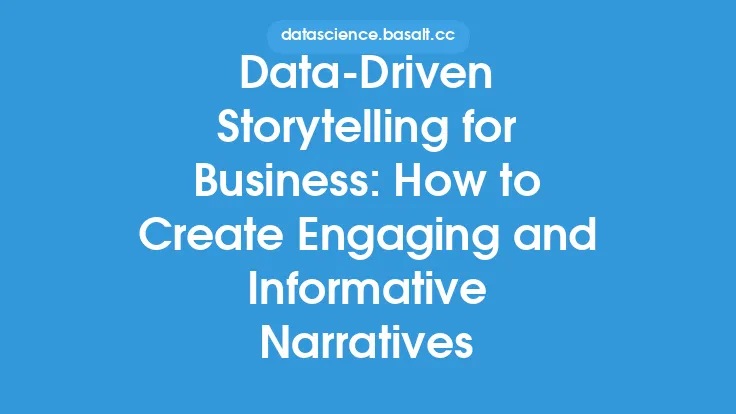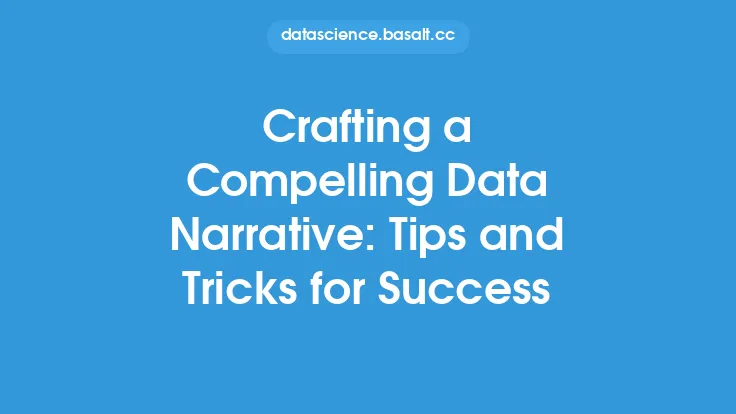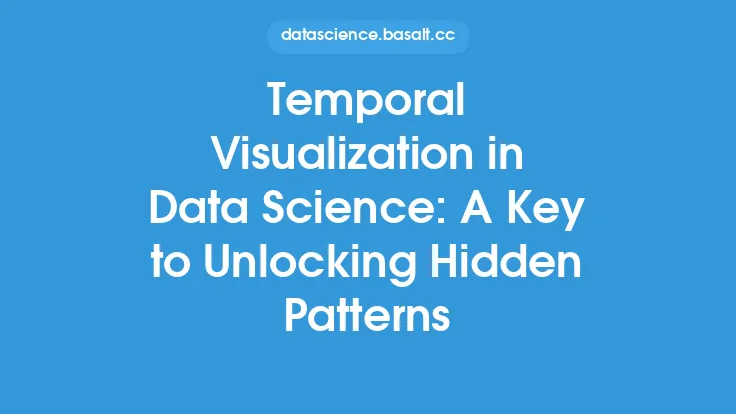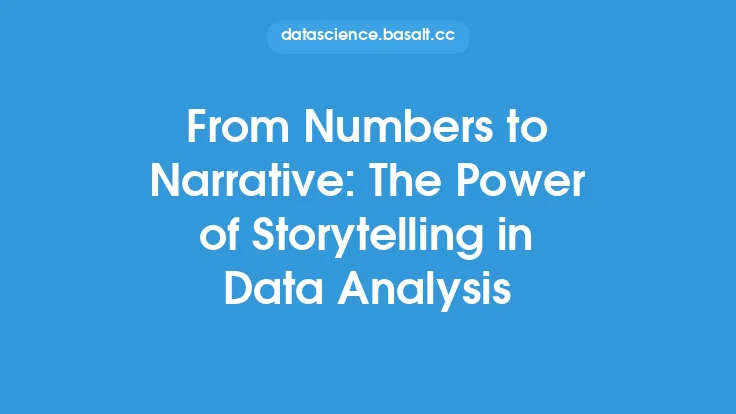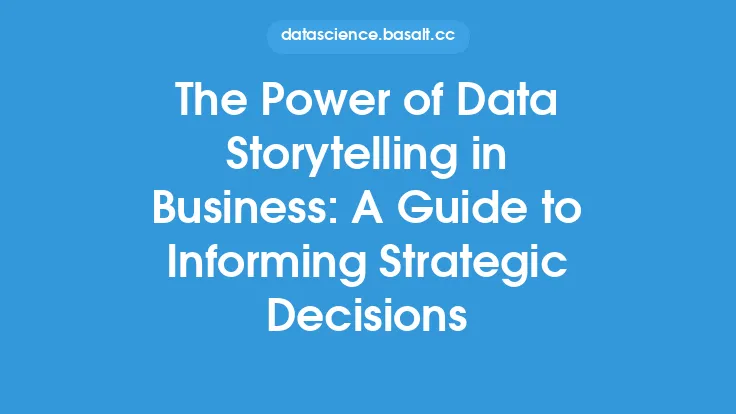When it comes to data storytelling, one of the most critical elements that can make or break the effectiveness of the narrative is the creation of a narrative arc. A narrative arc is the underlying structure that gives a story its shape, direction, and emotional resonance. It's the thread that weaves together the various elements of the story, including the data, to create a compelling and engaging narrative that resonates with the audience. In this article, we'll delve into the concept of a narrative arc in data storytelling, exploring its key components, and providing guidance on how to create a narrative arc that drives engagement and understanding.
Understanding the Components of a Narrative Arc
A narrative arc typically consists of several key components, including the exposition, rising action, climax, falling action, and resolution. The exposition sets the stage for the story, providing context and background information. The rising action builds tension and creates a sense of anticipation, as the story unfolds and the stakes are raised. The climax is the turning point of the story, where the tension reaches its peak and the outcome is decided. The falling action is the aftermath of the climax, where the story begins to unwind and the consequences of the climax are revealed. Finally, the resolution ties up loose ends and provides a sense of closure.
In the context of data storytelling, these components can be adapted to create a narrative arc that is tailored to the specific story being told. For example, the exposition might involve introducing the problem or question being addressed, while the rising action might involve presenting the data and analysis that sheds light on the issue. The climax might be the key insight or finding that emerges from the data, while the falling action might involve exploring the implications and consequences of that finding. The resolution might involve summarizing the main points and takeaways, and providing recommendations or next steps.
Crafting a Narrative Arc with Data
So, how do you craft a narrative arc with data? The first step is to identify the key elements of the story you want to tell. What is the problem or question being addressed? What data do you have to support your narrative? What insights or findings do you want to highlight? Once you have a clear sense of the story you want to tell, you can begin to structure your narrative arc.
One approach is to use a framework such as the "hero's journey" to guide the creation of your narrative arc. This framework, developed by Joseph Campbell, involves a series of stages that the hero (or protagonist) passes through on their journey. These stages include the call to adventure, the refusal of the call, the meeting of the mentor, the crossing of the threshold, and the return with the elixir. In the context of data storytelling, the hero's journey might involve the data analyst or scientist as the hero, who embarks on a journey to uncover insights and solve problems.
Another approach is to use a more structured framework, such as the "problem-agitation-solution" (PAS) framework. This framework involves identifying a problem, agitating it by highlighting the consequences and implications, and then offering a solution. In the context of data storytelling, the PAS framework might involve identifying a problem or question, presenting data that highlights the issue, and then offering insights or recommendations that address the problem.
Using Data Visualization to Enhance the Narrative Arc
Data visualization is a critical component of data storytelling, and can be used to enhance the narrative arc in a number of ways. Visualizations can be used to illustrate key points and findings, to highlight trends and patterns, and to create a sense of tension and anticipation. They can also be used to create a sense of drama and emphasis, by using color, size, and other visual elements to draw attention to key elements of the story.
Some common data visualization techniques that can be used to enhance the narrative arc include the use of interactive visualizations, such as dashboards and storytelling tools. These tools allow the audience to engage with the data in a more immersive and interactive way, and can be used to create a sense of agency and control. Other techniques include the use of animation and motion graphics, which can be used to create a sense of dynamism and energy.
Best Practices for Creating a Narrative Arc
So, what are some best practices for creating a narrative arc in data storytelling? First, it's essential to keep the narrative arc simple and focused. Avoid trying to tell too many stories or present too much data, as this can create confusion and overwhelm the audience. Instead, focus on a single key message or insight, and use the narrative arc to build tension and create a sense of anticipation around that message.
Second, use data visualization to enhance the narrative arc, rather than simply presenting data in a dry and abstract way. Visualizations can be used to create a sense of drama and emphasis, and to highlight key points and findings.
Third, use storytelling techniques such as the hero's journey or the PAS framework to guide the creation of your narrative arc. These frameworks can provide a structured approach to storytelling, and can help to create a sense of tension and anticipation.
Finally, practice and iterate on your narrative arc. Data storytelling is a skill that takes time and practice to develop, and it's essential to be willing to try new approaches and techniques. Don't be afraid to experiment and take risks, and be open to feedback and criticism from others.
Conclusion
Creating a narrative arc is a critical component of data storytelling, and can be used to drive engagement and understanding. By using a structured approach to storytelling, such as the hero's journey or the PAS framework, and by leveraging data visualization to enhance the narrative arc, you can create a compelling and engaging story that resonates with your audience. Remember to keep the narrative arc simple and focused, and to practice and iterate on your approach. With time and practice, you can develop the skills and techniques needed to create a narrative arc that drives engagement and understanding, and that helps to communicate insights and findings in a clear and compelling way.

